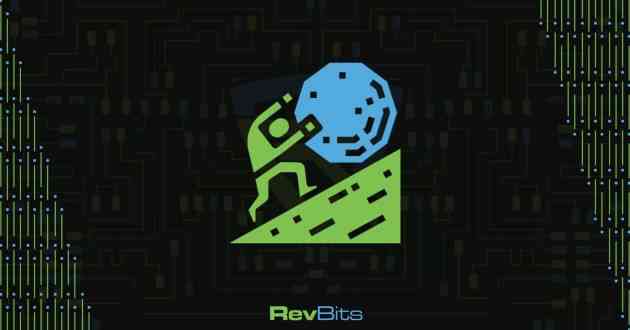Empowering Cybersecurity Operations To Accomplish More With Less
Let's read Forbes edition where RevBits CEO discussed how empower cybersecurity operations to accomplish more with less.
For many years, the cybersecurity industry has faced a significant challenge: a shortage of skilled security personnel. This has led many organizations to embrace the mantra: “Doing more with less.” But what does this mean in practice?
The concept of “doing more with less” essentially boils down to squeezing every ounce of productivity and effectiveness out of limited resources, including personnel and technology. While this approach has been necessary for many organizations, it comes with its problems.
One major issue that arises from this situation is the sheer burden placed on cybersecurity teams. When there aren’t enough skilled professionals to handle the ever-increasing cyber threats, team members are forced to take on more responsibilities. They work longer hours and tackle a broader range of tasks, often spreading themselves too thin. This can lead to burnout and a decrease in the quality of their work.
Additionally, without adequate automation, these teams spend excessive time on routine, repetitive tasks. Tasks such as monitoring security alerts, analyzing logs and patching vulnerabilities are essential but time-consuming. Security experts have less time to focus on strategic, high-value activities when bogged down with such tasks.
The Role Of Security Automation
Automation in cybersecurity operations is a productivity enabler. It empowers security teams to break free from the constraints of workforce shortages and the “do more with less” mindset. Here’s how:
• Efficient Alert Handling: Automated systems can quickly analyze and prioritize security alerts, ensuring that only critical threats require human intervention.
• Continuous Monitoring: Automated security capabilities tirelessly monitor systems 24/7/365, reducing the need for manual oversight while enabling rapid threat detection.
• Faster Response Times: Automated incident response can execute predefined actions in real time, mitigating threats within seconds rather than hours or days.
• Vulnerability Management: Automated identifying and patching vulnerabilities reduces the attack surface, minimizing the risk of exploitation.
• Resource Optimization: By offloading routine tasks to automation, cybersecurity teams can focus their expertise on strategic planning, threat analysis and proactive defense measures.
Embracing automated security enables organizations to use existing resources optimally, whether facing budget constraints or a shortage of skilled cybersecurity professionals. Organizations can allocate human expertise to more strategic and creative aspects of cybersecurity. Security teams can, then, focus on developing innovative security strategies, fine-tuning existing protocols and engaging in threat intelligence analysis, ultimately enhancing the organization's overall resilience.
Cyber threats themselves are constantly evolving and automating. The continuous dynamic nature of automation has, therefore, become a critical asset to corporate defenders. Automated security systems can continuously adapt to emerging threats, providing a real-time defense mechanism that would be challenging to replicate manually. This adaptability is crucial in maintaining a robust cybersecurity posture and ensuring that organizations are well-prepared to face the changing cyber risks.
The transition to doing more efficiently with the same or fewer resources through automation is an evolutionary step in cybersecurity. By embracing automated security, organizations can optimize their operational efficiency, empower their cybersecurity teams and better protect their digital assets.
How To Leverage Automation
Organizations, though, must take several steps to get started with automating their cybersecurity processes. Here are a few key ones to consider:
• Identify the areas and tasks suitable for automation, such as repetitive, manual or time-consuming activities. Examples include vulnerability scanning, patch management, incident response and threat hunting.
• Evaluate the benefits and risks of automation, such as improved efficiency, accuracy and scalability, as well as potential challenges, such as false positives, compliance issues and human oversight.
• Implement automation in a way that aligns with the organization’s security goals, policies and standards. Integrate various security automation tools and platforms—such as configuration management, infrastructure as code, and security orchestration, automation and response (SOAR)—with solutions that support on-premises and are cloud-native.
• Develop and implement security automation playbooks and workflows that define the logic and actions for different scenarios and use cases.
• Monitor and measure the performance and effectiveness of automation, using metrics such as time saved, errors reduced and incidents resolved. Adjust and improve automation processes as needed based on feedback and data analysis.
• Train and empower the cybersecurity teams to embrace and adopt automation by providing them with the necessary skills, knowledge and tools. Educate them on the benefits and limitations of automation and how to use it to enhance their security capabilities and roles. Encourage them to focus on higher-value and strategic tasks such as threat intelligence, analysis and innovation.
• Embrace a DevOps culture that collaborates with other teams and stakeholders to align security automation with business objectives and risk appetite.
The reality of “doing more with less” in cybersecurity embodies the industry's ongoing need to adapt and scale when faced with resource constraints. By leveraging automation properly, security teams can transform the challenge into the more valuable ability of “doing more with greater efficiency and resource conservation.”
Forbes Technology Council is an invitation-only community for world-class CIOs, CTOs and technology executives. Do I qualify?



